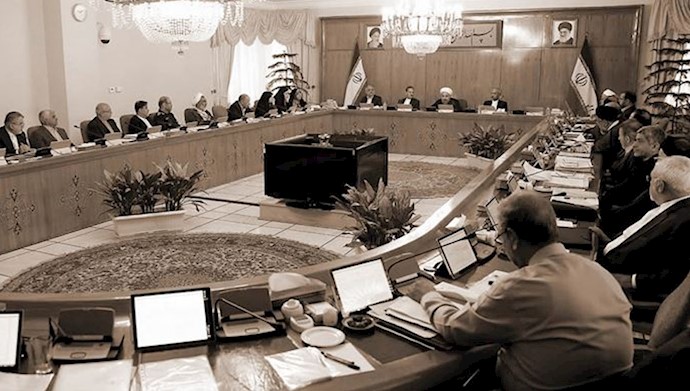Analysis by PMOI/MEK
Iran, Aug. 2019 – In the wake of the revelations that the Iranian regime’s Health Ministry has been importing power cables instead of stent tubes for patients with heart diseases, infighting among the different factions of the ruling elite in Iran has mounted to the next level.
On July 16, Sharghdaily wrote: “Using two million Euros of foreign currency bought at state prices, they’ve imported power cables instead of the stent. In some instances, expired medicament has been imported.”
In Iran, U.S. dollars are bought and sold at two very different rates. The volatile and changing market rate stands at about 120,000 rials dollar, while the state-set fixed rate is 42,000 rials.
The mullahs’ regime is supposed to sell the U.S. dollars at state-set prices for special purposes, such as importing essential goods, medicine or raw material for manufacturing. However, what happens in practice is a catastrophe of blatant corruption, nepotism, and mismanagement.
Following wide media coverage on this subject, Abdolnaser Hemmat, director of Iran’s Central Bank, called for the “ministries’ special attention to the people who received currency at state-set prices for importing medicine and essential goods, and have not fulfilled their pledges.”
Hemmat wrote a letter to Iranian regime president Hassan Rouhani while preaching about “providing essential goods and medicine in a timely and sufficient manner considering their strategic importance in the family’s basket of goods.”
“A major part of foreign currency pledges regarding the import of goods into the country hasn’t been fulfilled yet, despite that the currency has been provided and the legal time window has expired. The annual documents showing the certain import and release of the mentioned goods have not been registered in the system.”
On July 28, after receiving Hemmat’s letter, Rouhani called on every governmental institution and companies to “swiftly respond why such violations have taken place?”
Mahmoud Vaezi, Hassan Rouhani’s chief of staff, brought up the letter with the minsters of Industry, Mine and Trade, Agriculture, and Health.
The central bank chief’s letter, Rouhani’s official order and Vaezi’s follow up to whitewash the degree of corruption in the mullahs’ regime also show how discontent and resentful the Iranian public has become with the current regime’s economic record.
Over the past two years, there have been frequent cases where the Iranian judiciary prosecuted small-time offenders for economic violations but never revealed the culprits and how billions of dollars vanish from public funds.
The following are a number of massive corruption and embezzlement cases over the past two years, according to the regime’s own state-run media:
1 – Between 15 and 17 August 2018, rouydad24 reported that the petrochemical industry should have deposited $30 billion into the Iranian banking system. However, not even a single cent of it is there.
2 – On 27 June 2018, the ISNA news agency reported that of the €220 million that has been allocated to companies importing mobile phones, €145 million have disappeared.
3 – On 14 May 2019, the ILNA news agency reported that 200,000 metric tons of paper have been purchased and imported into Iran with U.S. dollars at state-set prices. However, only 14,000 tons of it have been distributed. The remaining 184,000 tons have disappeared.
4 – The Islamic Republic of Iran News Network’s website reported on June 27 that €29 million at state-set prices have been allocated to a company for importing mobile phones. However, the company imported only €13 million Euros worth of such goods.
5 – On 9 August 2018, the Youth Journalist Club quoted Ezzatollah Yousefian Molla, a member of Iran’s Majlis (parliament), saying from $11 billion distributed at state-set prices, “only $2.5 billion have been disclosed and unfortunately, it is not clear what happened to close to $9 billion.”





